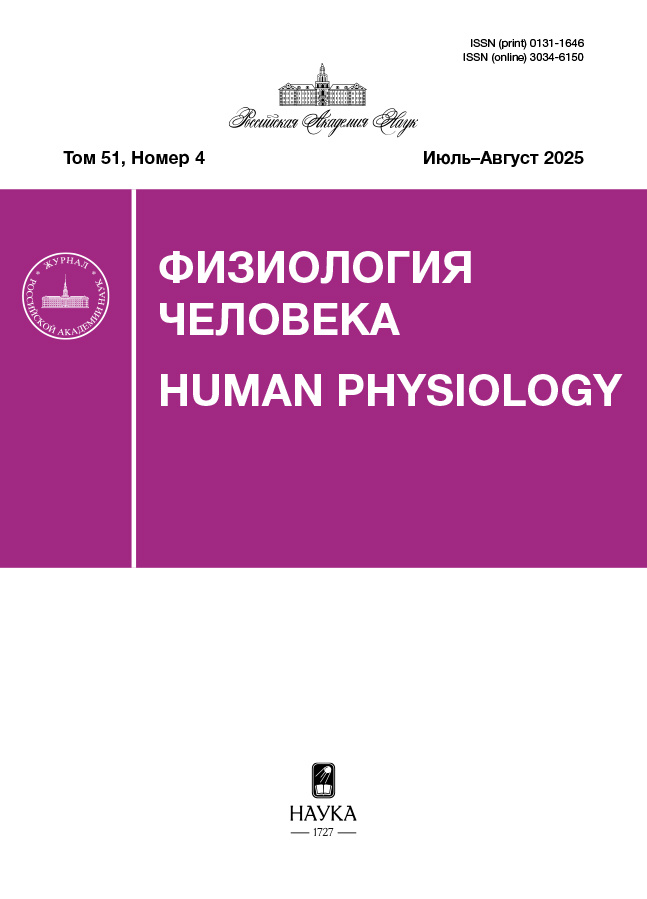Na+/K+ отношение в сыворотке крови как критерий функционального состояния человека
- Авторы: Наточин Ю.В.1
-
Учреждения:
- ФГБУН Институт эволюционной физиологии и биохимии имени И.М. Сеченова РАН
- Выпуск: Том 50, № 4 (2024)
- Страницы: 137-143
- Раздел: Статьи
- URL: https://ter-arkhiv.ru/0131-1646/article/view/664112
- DOI: https://doi.org/10.31857/S0131164624040111
- EDN: https://elibrary.ru/BSPNVM
- ID: 664112
Цитировать
Полный текст
Аннотация
В данной статье обсуждается вопрос о физиологическом значении Na+/K+ отношения в сыворотке крови как критерия функционального состояния человека. В норме у взрослых оно составляет 32.2 ± 0.5, возрастает при действии экстремальных факторов полета в космос (космонавты, астронавты), длительном строгом постельном режиме, тяжелых вариантах течения Ковид-19, обострении некоторых орфанных заболеваний у детей. Функциональное значение Na+/K+ отношения касается сыворотки крови, а не трансмембранного градиента ионов между клеткой, богатой K+, и внеклеточной средой, где доминирует Na+, и служит показателем физиологического состояния человека.
Ключевые слова
Полный текст
Об авторах
Ю. В. Наточин
ФГБУН Институт эволюционной физиологии и биохимии имени И.М. Сеченова РАН
Автор, ответственный за переписку.
Email: natochin1@mail.ru
Россия, Санкт-Петербург
Список литературы
- Тиц Н.У. Энциклопедия клинических лаборатор-ных тестов. Пер. с англ. М.: Лабинформ, 1997. 960 с.
- Марина А.С., Наточин Ю.В. Анализ крови и мочи в клинической диагностике. Справочник педиатра. СПб.: СпецЛит, 2016. 159 c.
- Гайтон А., Холл Дж.Э. Медицинская физиология. 11-е изд. / Пер. с англ. М.: Логосфера, 2008. 1296 с.
- Баркрофт Д. Основные черты архитектуры физиологических функций. Пер. с англ. М.-Л.: Биомедгиз, 1937. 319 с.
- Орбели Л.А. Физиология почек // Избранные труды. М.-Л.: АН СССР, 1966. Т. 4. С. 85.
- Наточин Ю.В. Гомеостаз // Успехи физиол. наук. 2017. Т. 48. № 4. С. 3.
- Наточин Ю.В., Рябов С.И., Каюков И.Г. и др. Показатели водно-солевого гомеостаза и их вариабельность // Физиология человека. 1980. Т. 6. № 4. С. 647.
- Наточин Ю.В., Кузнецова А.А., Нистарова А.В. Na/K отношение в сыворотке крови при орфанных заболеваниях // Патологическая физиология и экспериментальная терапия. 2021. Т. 65. № 3. С. 34.
- Наточин Ю.В., Чернышев О.Б. Концентрация электролитов в сыворотке крови как предвестник тяжелого течения COVID-19 // Нефрология. 2022. Т. 26. № 1. С. 27.
- Фундаментальная и медицинская физиология: Учебник для студентов высших учебных заведений: в 3-х томах / Под ред. Камкина А.Г. М.: Де’Либри, 2020. Т. 3. 456 с.
- Cannon W.B. Organization for physiological homeostasis // Physiol. Rev. 1929. V. 9. № 3. P. 399.
- Fijorek K., Püsküllüoğlu M., Tomaszewska D. et al. Serum potassium, sodium and calcium levels in healthy individuals – literature review and data analysis // Folia Med. Cracov. 2014. V. 54. № 1. P. 53.
- Наточин Ю.В., Голосова Д.В., Каюков И.Г. Константы концентрации калия и натрия в сыворотке крови – поиск факторов регуляции // Физиология человека. 2018. Т. 44. № 4. С. 67.
- Григорьев А.И., Козыревская Г.И., Наточин Ю.В. и др. Обменно-эндокринные процессы //Космические полеты на кораблях "Союз". Биомедицинские исследования. М.: Наука, 1976. 413 с.
- Leach Huntoon C.S., Grigoriev A.I., Natochin Yu.V. San Diego: American Astronautical Society Diego, 1998. 219 p.
- Балботкина Е.В., Баллюзек М.Ф., Воловникова В.А. и др. Ионорегулирующая и водовыделительная функции почек при сахарном диабете 2 типа // Сахарный диабет. 2016. Т. 19. № 1. С. 64.
- Орбели Л.А. Основные задачи и методы эволюционной физиологии // Избранные труды. М.-Л.: АН СССР, 1961. Т. 1. С. 59.
- Natochin Yu.V., Chernigovskaya T.V. Evolutionary physiology: history, principles // Comp. Biochem. Physiol. 1997. V. 118. № 1. P. 63.
- Наточин Ю.В. Эволюционная физиология // Журн. эволюц. биохимии и физиологии. 2017. Т. 53. № 2. С. 139.
- Park S., Baek S.H., Lee S.W. et al. Elevated baseline potassium level within reference range is associated with worse clinical outcomes in hospitalised patients // Sci. Rep. 2017. V. 7. № 1. P. 2402.
Дополнительные файлы














